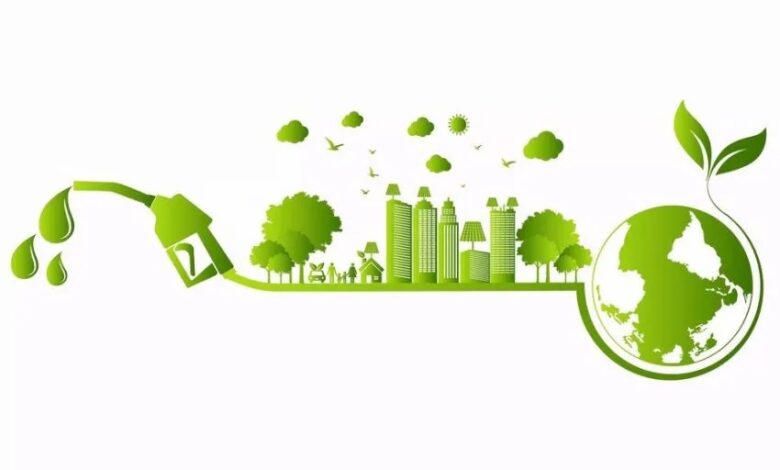
-
India’s ethanol blending has delivered strong economic gains, saving about $16.36 billion in foreign exchange while paying farmers $14.20 billion through the EBP programme by July 2025, boosting rural incomes and external stability.
-
As India consolidates its progress, the ethanol programme stands as a practical example of development that is simultaneously pro-growth, pro-farmer, and pro-environment.
India’s biofuel mission has emerged as one of the country’s most significant green-growth initiatives.
What started as a plan to cut crude oil imports and reduce pollution has grown into a multi-sector effort: farmers are gaining additional income, rural industries are expanding, foreign-exchange savings are rising, and cleaner fuel is being used in daily transport.
The target of 20% ethanol blending (E20) has shifted from a policy objective to visible progress, with recent data indicating the country is close to achieving it.
During the Ethanol Supply Year 2024–25, average ethanol blending reached 19.05 percent as of July 31, 2025, while monthly blending peaked at 19.93 percent in July 2025, effectively hitting the 20 percent target for that month. These figures underline the coordinated push by oil marketing companies, distilleries, state governments, and farmers to strengthen both supply and distribution networks.
The economic impact is substantial. By replacing imported crude with domestically produced ethanol, India has secured meaningful foreign-exchange savings.
Government data estimates these savings at around $16.36 billion (₹1.44 lakh crore), a notable addition to the country’s external stability. At the same time, cumulative payments to farmers under the Ethanol Blended Petrol (EBP) programme have crossed $14.20 billion (₹1.25 lakh crore) through July 2025. For rural households and sugarcane communities, this represents steady and dependable income, reinforcing social and economic resilience.
Rural prosperity has always been central to the ethanol mission. Feedstocks such as sugarcane, B-heavy molasses, maize, and increasingly surplus or damaged grains have provided farmers with an assured market. The diversion of excess rice reserves into ethanol production, with the Food Corporation of India allocating millions of tonnes for conversion, illustrates how agricultural and energy policy can work in tandem. This approach stabilises farm incomes, reduces stockpiling costs, and prevents foodgrain wastage, making ethanol blending not only an energy initiative but also a rural development measure.
The industry around ethanol has expanded rapidly. New distilleries and expansions of existing units have lifted national production capacity, with projections for 2024–25 surpassing earlier estimates.
Both private firms and public-sector enterprises have invested in modern plants, while oil marketing companies have strengthened blending infrastructure and logistics. The outcome is a developing ecosystem where agricultural residue, industrial output, and fuel distribution are aligned with a single national goal.
Environmental benefits are equally important. Higher ethanol blends lower the carbon intensity of transport fuels and cut emissions of carbon monoxide and unburnt hydrocarbons. Government reporting links the EBP programme to significant reductions in carbon dioxide (CO₂) and substantial crude oil substitution. These outcomes directly support cleaner air in cities and help India stay on track with its international climate commitments. As E20 blending becomes more widespread across pumps and states, these environmental benefits will accumulate further.
The International Energy Agency (IEA) has taken note of India’s rapid bioenergy expansion and ambitious blending trajectory. It ranks India among the fastest-growing bioenergy markets in the world and highlights the country’s shorter-than-expected timeframe to achieve 20 percent blending. Such recognition positions India as a reference point for other developing economies seeking to combine energy security with rural growth.
Beyond the headline numbers, the design of the ethanol programme delivers multiple and reinforcing gains. Farmers receive prompt payments and a reliable income stream. Sugar mills benefit from diversified demand for cane and molasses. Oil marketing companies and refineries build resilience by using a wider range of inputs. Consumers, in turn, gain from cleaner air and enhanced energy security. The adoption of second-generation feedstocks, including crop residues that might otherwise be wasted or burned, offers scope for even greater sustainability improvements as technology advances.
Momentum from the near-achievement of E20 has sparked discussion about the next stage of blending beyond 2025. Policymakers and industry are exploring new pathways, from higher blending targets to stronger domestic feedstock chains. Forward planning is essential: it sustains investment, builds confidence in the ethanol sector, and supports the supply-chain innovations needed for long-term growth aligned with climate objectives. Market signals suggest both public and private actors are already responding, with accelerated investments in capacity and distribution upgrades.
For consumers, the benefits are visible and growing. Lower oil imports support macroeconomic stability, improved air quality strengthens public health, and a diversified fuel basket cushions India against global crude shocks. As national blending levels approach and stabilise near 20 percent, motorists and businesses will increasingly draw on a domestic, cleaner, and more reliable energy supply.
India’s ethanol story is, at its core, about coordinated systems working together. Farmers, distilleries, oil companies, regulators, and policymakers have aligned around a common objective, producing measurable results: near-E20 blending, significant foreign-exchange savings, higher farmer incomes, and an expanding green-energy industry. The experience shows how environmental ambition can be translated into economic returns when markets, policy, and communities move in the same direction.
As India consolidates its progress, the ethanol programme stands as a practical example of development that is simultaneously pro-growth, pro-farmer, and pro-environment. The biofuel mission has moved beyond experimentation to become a structural element of national energy strategy. It is delivering on its promise of cleaner fuel, stronger rural incomes, and a more resilient economy, while pointing the way for other countries seeking to balance growth with sustainability.












